
This story originally appeared on UpCounsel and was produced and distributed in partnership with Stacker Studio.
Small business statistics for every state
Small businesses truly are the backbone of the U.S. economy, employing millions of workers, offering opportunities to marginalized communities, and fueling trade and economic energy.
The economic impact of COVID-19 on American small businesses may lead to the end of many jobs that support families and children, result in a disastrous drop in tax coffers, and wield an incalculable blow to creativity and entrepreneurship.
Tens of thousands of small businesses have shuttered as states have tried to protect against the spread of COVID-19, especially in industries of hospitality, tourism, retail, and personal care. Most of them, experts say, may stay closed for good.
Despite taking advantage of such options as the government's Paycheck Protection Plan to pay salaries and wages, many small businesses say they will be laying off and furloughing workers as the federal funds are spent. About half have said they will need more financial support to stay afloat.
The end of the year, typically a time for small businesses to thrive on holiday sales, in 2020 offers little good cheer. Over 20% of small businesses say their sales levels are still less than half of what they were before the public health crisis. More than half say business is not likely to return to pre-pandemic levels until next year, although a fifth of small business owners are even more pessimistic and fear it will take until 2022.
UpCounsel took a look at small businesses and how they are faring around the country, using data from the U.S. Small Business Administration Office of Advocacy's 2020 Small Business Profiles and Kauffman's 2019 Indicators of Entrepreneurship to compile small business statistics for every state. Each slide contains information on how many small businesses exist in the state, how many employees are working in these businesses, and statistics on the success of new businesses and entrepreneurs.

Alabama
- Small businesses in the state: 401,717 (99.4% of all businesses)
- Small business employment: 802,920 (47.5% of all employees)
- New employer businesses per 100 people: 0.09 (23,841 net new jobs)
- Average startup early job creation: 4.69 (#26 highest of all states)
- Self-employed minorities: 46,916 (#24 highest of all states)
- Startup one-year survival rate: 81.5%
- Rate of new employer business actualization: 9.9%
- Rate of new entrepreneurs: 0.2%
- Opportunity share of new entrepreneurs: 89.7%
- Small business exporters: 3,386
About four out of five small businesses in Alabama say they have had shortages or shipping delays due to the coronavirus, a recent survey showed, and more than half said they would need financial relief to recover from the economic impact of the pandemic. Over the summer, the state announced a "Revive Alabama" grant program to reimburse small businesses for expenses attributable to the outbreak.

Alaska
- Small businesses in the state: 73,298 (99.1% of all businesses)
- Small business employment: 137,271 (52.4% of all employees)
- New employer businesses per 100 people: 0.17 (2,277 net new jobs)
- Average startup early job creation: 3.47 (#49 highest of all states)
- Self-employed minorities: 10,413 (#40 highest of all states)
- Startup one-year survival rate: 81.8%
- Rate of new employer business actualization: 13.6%
- Rate of new entrepreneurs: 0.4%
- Opportunity share of new entrepreneurs: 85.3%
- Small business exporters: 587
More than a third of business owners in Anchorage have said COVID-19 put them at risk of closing, possibly forever, according to a local survey. More than 7,000 small businesses in Alaska took advantage of the federal government's Paycheck Protection Program that offered forgivable loans to cover payroll expenses. The state also decided to distribute $290 million in federal assistance as grants to small businesses, many of which have been hit especially hard by the loss of tourism revenue.

Arizona
- Small businesses in the state: 592,485 (99.4% of all businesses)
- Small business employment: 1.1 million (43.5% of all employees)
- New employer businesses per 100 people: 0.10 (44,301 net new jobs)
- Average startup early job creation: 4.49 (#29 highest of all states)
- Self-employed minorities: 122,590 (#8 highest of all states)
- Startup one-year survival rate: 77.9%
- Rate of new employer business actualization: 10.0%
- Rate of new entrepreneurs: 0.3%
- Opportunity share of new entrepreneurs: 87.8%
- Small business exporters: 6,742
Small businesses employ more than 1 million people in Arizona and last year created more than 44,000 jobs in the state. In recent years, small businesses have benefited from Arizona being one of the fastest-growing state economies in the country, driven in large part by population migration to the desert state.

Arkansas
- Small businesses in the state: 255,004 (99.3% of all businesses)
- Small business employment: 490,680 (47.6% of all employees)
- New employer businesses per 100 people: 0.10 (10,151 net new jobs)
- Average startup early job creation: 4.32 (#32 highest of all states)
- Self-employed minorities: 25,654 (#32 highest of all states)
- Startup one-year survival rate: 78.0%
- Rate of new employer business actualization: 12.5%
- Rate of new entrepreneurs: 0.3%
- Opportunity share of new entrepreneurs: 86.8%
- Small business exporters: 1,780
Arkansas has been ranked among the top states for starting a small business. Its industries include lumber, tourism, poultry, rice production, natural gas, and oil production. Nearly 1,800 small businesses exported goods from Arkansas in 2018, the most recent figure available, generating almost a fifth of the state's $5.5 billion in exports.

California
- Small businesses in the state: 4.1 million (99.8% of all businesses)
- Small business employment: 7.2 million (48.5% of all employees)
- New employer businesses per 100 people: 0.14 (214,569 net new jobs)
- Average startup early job creation: 6.34 (#7 highest of all states)
- Self-employed minorities: 1.2 million (#1 highest of all states)
- Startup one-year survival rate: 81.3%
- Rate of new employer business actualization: 15.6%
- Rate of new entrepreneurs: 0.4%
- Opportunity share of new entrepreneurs: 87.4%
- Small business exporters: 68,022
In California, small businesses employed nearly half of all workers in the state, although those figures are in flux due to the economic impact of the coronavirus. In 2019, of the 214,569 jobs created by small businesses in California, companies with fewer than 20 employees created 147,780 jobs.

Colorado
- Small businesses in the state: 653,639 (99.5% of all businesses)
- Small business employment: 1.1 million (48.1% of all employees)
- New employer businesses per 100 people: 0.17 (33,618 net new jobs)
- Average startup early job creation: 6.64 (#3 highest of all states)
- Self-employed minorities: 72,132 (#13 highest of all states)
- Startup one-year survival rate: 78.7%
- Rate of new employer business actualization: 11.1%
- Rate of new entrepreneurs: 0.3%
- Opportunity share of new entrepreneurs: 85.4%
- Small business exporters: 5,105
More than 100,000 small businesses in Colorado signed up with the federal government's Paycheck Protection Program, borrowing $10.4 billion to help cover payroll costs after COVID-19 broke out in March. For nearly four out of five small businesses, the loans amounted to less than $150,000. The state also launched an "Energize Colorado Gap Fund" to provide more than $25 million in loans and grants for small businesses with fewer than 25 employees.

Connecticut
- Small businesses in the state: 350,376 (99.4% of all businesses)
- Small business employment: 745,085 (48.5% of all employees)
- New employer businesses per 100 people: 0.09 (972 net new jobs)
- Average startup early job creation: 3.78 (#43 highest of all states)
- Self-employed minorities: 43,867 (#25 highest of all states)
- Startup one-year survival rate: 69.4%
- Rate of new employer business actualization: 9.5%
- Rate of new entrepreneurs: 0.2%
- Opportunity share of new entrepreneurs: 75.1%
- Small business exporters: 5,057
Some 3,700 small businesses in Connecticut have been forced to shut down by the economic impact of COVID-19, according to recent figures by the secretary of the state. Less than half of the state's small businesses say they expect to make a profit this year, and more than half said they had cut hours and laid off or furloughed employees due to the coronavirus, according to a business association survey.

Delaware
- Small businesses in the state: 84,675 (98.4% of all businesses)
- Small business employment: 187,221 (46.7% of all employees)
- New employer businesses per 100 people: 0.18 (4,776 net new jobs)
- Average startup early job creation: 4.90 (#21 highest of all states)
- Self-employed minorities: 11,944 (#37 highest of all states)
- Startup one-year survival rate: 78.8%
- Rate of new employer business actualization: 6.6%
- Rate of new entrepreneurs: 0.3%
- Opportunity share of new entrepreneurs: 89.0%
- Small business exporters: 1,909
In Delaware, small businesses can tap into a $100 million grant program to help with the impact of COVID-19. The program offers grants of up to $100,000 to pay for buying equipment to make the workplace safe such as PPE, Plexiglass, air purifiers, and other expenses brought on by COVID-19. Among the initial applications, food services, retail establishments, and personal care facilities dominated the industries seeking help. More than half were women- or minority-owned businesses. Three-quarters were businesses with revenues of less than $1 million a year and fewer than 10 employees.
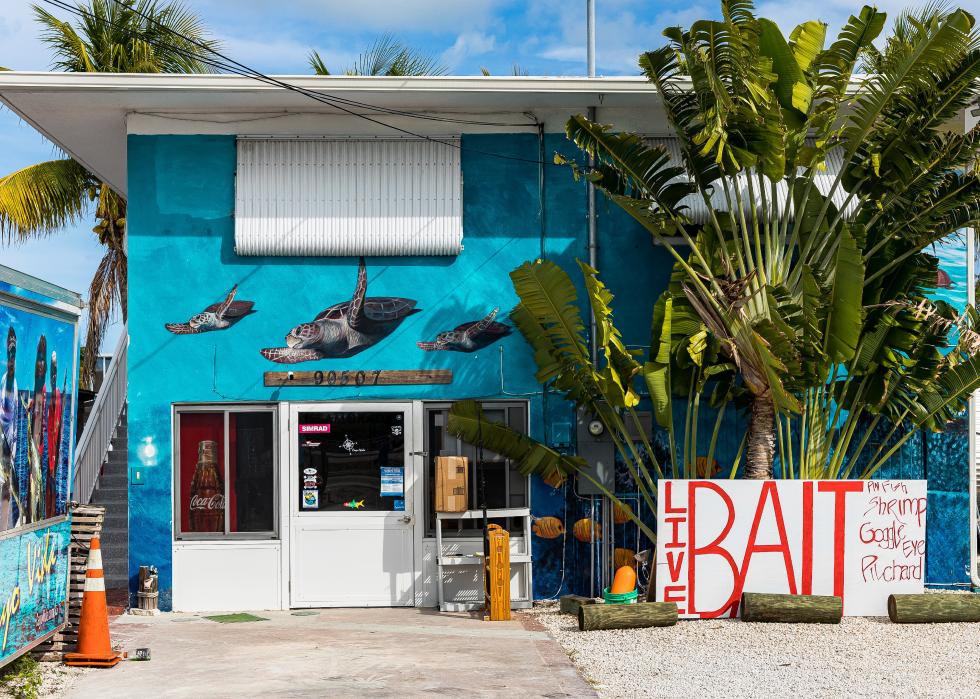
Florida
- Small businesses in the state: 2.7 million (99.8% of all businesses)
- Small business employment: 3.5 million (41.7% of all employees)
- New employer businesses per 100 people: 0.16 (133,441 net new jobs)
- Average startup early job creation: 6.37 (#5 highest of all states)
- Self-employed minorities: 527,247 (#2 highest of all states)
- Startup one-year survival rate: 77.9%
- Rate of new employer business actualization: 8.7%
- Rate of new entrepreneurs: 0.5%
- Opportunity share of new entrepreneurs: 88.3%
- Small business exporters: 55,648
Small businesses start and fail at an active pace in Florida. At the end of 2018, almost 22,000 businesses started up, creating over 79,000 jobs. At the same time, more than 18,000 businesses closed, with a loss of more than 68,000 jobs. During the COVID-19 pandemic, small businesses in Florida have been hard hit by a drop in tourism.

Georgia
- Small businesses in the state: 1.1 million (99.6% of all businesses)
- Small business employment: 1.7 million (43.1% of all employees)
- New employer businesses per 100 people: 0.12 (64,905 net new jobs)
- Average startup early job creation: 5.84 (#9 highest of all states)
- Self-employed minorities: 202,769 (#4 highest of all states)
- Startup one-year survival rate: 75.6%
- Rate of new employer business actualization: 7.8%
- Rate of new entrepreneurs: 0.4%
- Opportunity share of new entrepreneurs: 88.4%
- Small business exporters: 13,195
Georgia was one of the first states to reopen its businesses during the pandemic, a decision made by the governor in late April. A survey taken the following month found that most small businesses felt a drop in revenues, but few thought the damage would last long. Nearly two-thirds say they expected business to return to normal within six months, and a mere 4% said they thought business would never recover.
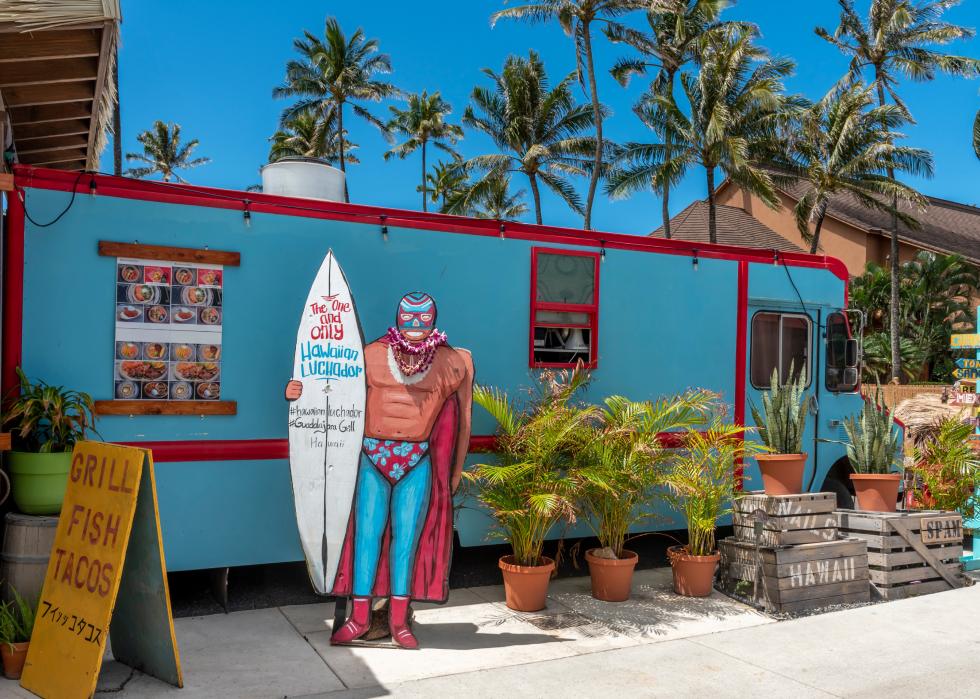
Hawaii
- Small businesses in the state: 135,567 (99.3% of all businesses)
- Small business employment: 275,908 (50.7% of all employees)
- New employer businesses per 100 people: 0.09 (365 net new jobs)
- Average startup early job creation: 4.36 (#31 highest of all states)
- Self-employed minorities: 53,064 (#20 highest of all states)
- Startup one-year survival rate: 76.6%
- Rate of new employer business actualization: 8.1%
- Rate of new entrepreneurs: 0.3%
- Opportunity share of new entrepreneurs: 88.4%
- Small business exporters: 684
Small businesses were hit quickly by COVID-19 in Hawaii, where data by the University of Hawaii found average monthly revenue to small businesses dropped by 60% by April. Restaurants alone lost more than 40,000 jobs between February and April, as the tourism industry was devastated by the lockdown. A resurgence in COVID-19 over the summer prompted a second round of business closings. In one attempt to meet the demand for personal protective equipment and boost small businesses, Hawaii's state has offered $10 million in grants for small businesses to manufacture PPE.
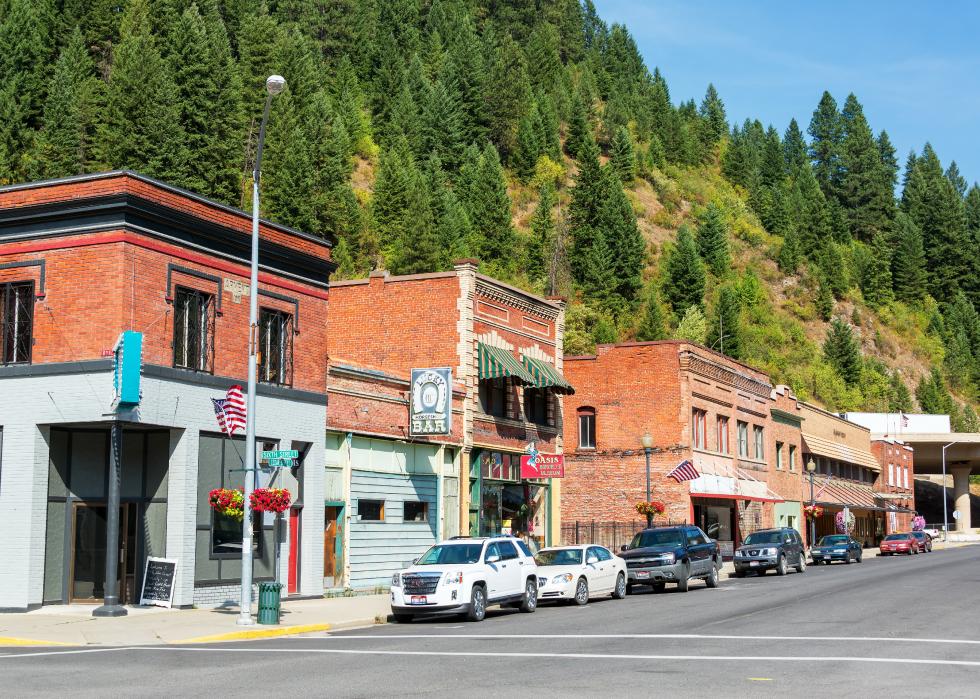
Idaho
- Small businesses in the state: 169,151 (99.2% of all businesses)
- Small business employment: 325,294 (56.3% of all employees)
- New employer businesses per 100 people: 0.18 (16,609 net new jobs)
- Average startup early job creation: 6.80 (#2 highest of all states)
- Self-employed minorities: 9,203 (#41 highest of all states)
- Startup one-year survival rate: 78.8%
- Rate of new employer business actualization: 14.5%
- Rate of new entrepreneurs: 0.4%
- Opportunity share of new entrepreneurs: 87.2%
- Small business exporters: 1,404
The state government of Idaho prides itself on being small business-friendly and emphasizes to prospective businesses that costs and taxes are low and that the state lacks regulations that could pose obstacles. The state enjoyed some of the strongest small business job growth—more than 20%—in the country from 2016 to 2020. It offered "Idaho Rebound" cash grants to small businesses.

Illinois
- Small businesses in the state: 1.2 million (99.6% of all businesses)
- Small business employment: 2.5 million (45.1% of all employees)
- New employer businesses per 100 people: 0.11 (20,410 net new jobs)
- Average startup early job creation: 4.71 (#25 highest of all states)
- Self-employed minorities: 152,706 (#5 highest of all states)
- Startup one-year survival rate: 78.9%
- Rate of new employer business actualization: 12.2%
- Rate of new entrepreneurs: 0.3%
- Opportunity share of new entrepreneurs: 83.8%
- Small business exporters: 21,160
The state of Illinois has launched a $270 million Business Interruption Grant program, with $70 million earmarked for businesses in areas hard-hit by the pandemic, $60 million set aside for "heavily distressed" businesses like movie theaters, and $60 million destined for independent retail businesses and those in tourism and hospitality. Eligible businesses, those with revenues of $20 million or less in 2019, can get grants ranging from $5,000 to $150,000. In the first round of funding, more than half the grants went to minority-owned businesses.
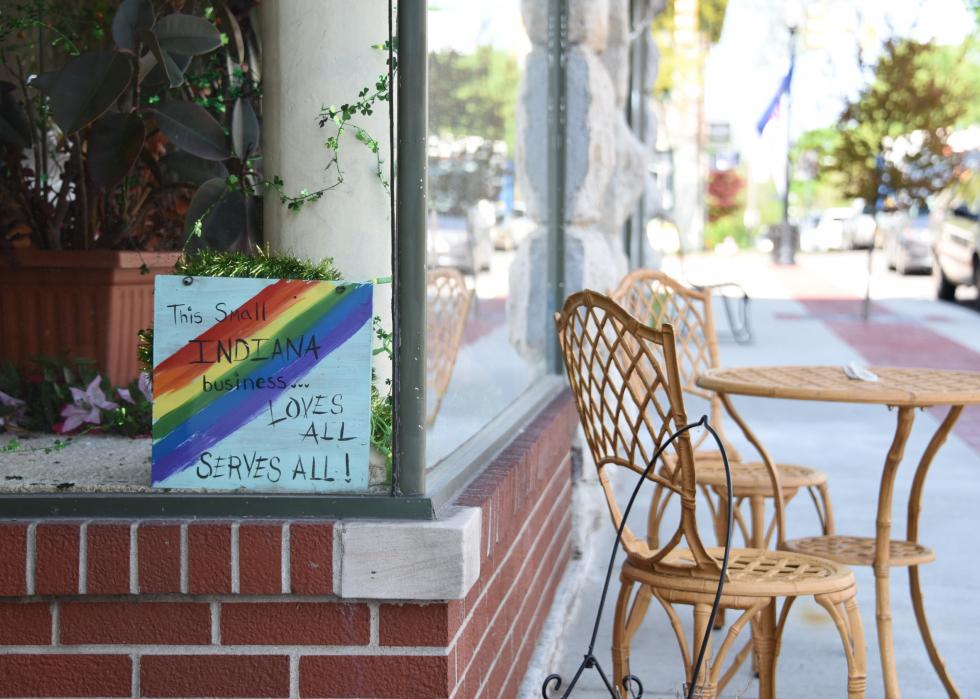
Indiana
- Small businesses in the state: 521,656 (99.4% of all businesses)
- Small business employment: 1.2 million (44.4% of all employees)
- New employer businesses per 100 people: 0.08 (37,485 net new jobs)
- Average startup early job creation: 3.59 (#47 highest of all states)
- Self-employed minorities: 38,852 (#27 highest of all states)
- Startup one-year survival rate: 79.9%
- Rate of new employer business actualization: 10.6%
- Rate of new entrepreneurs: 0.3%
- Opportunity share of new entrepreneurs: 90.3%
- Small business exporters: 7,167
One in five small business owners in Indiana told a recent survey that they would be forced to close if the economy does not improve in the coming six months. Two-thirds said they expect to be operating under different business models once the pandemic eases. The state has allocated $30 million for a Small Business Restart Grant program, and in September, the state expanded the types of businesses that are eligible. Businesses with fewer than 50 employees that have lost at least 40% of revenues could get as much as $10,000 to help pay rent, utility bills, and other costs.

Iowa
- Small businesses in the state: 272,555 (99.3% of all businesses)
- Small business employment: 649,796 (48.0% of all employees)
- New employer businesses per 100 people: 0.10 (5,034 net new jobs)
- Average startup early job creation: 3.58 (#48 highest of all states)
- Self-employed minorities: 11,843 (#38 highest of all states)
- Startup one-year survival rate: 81.4%
- Rate of new employer business actualization: 13.5%
- Rate of new entrepreneurs: 0.3%
- Opportunity share of new entrepreneurs: 85.3%
- Small business exporters: 2,817
More than one in five of Iowa's small businesses have said they will have to lay off workers in the coming months. A large majority of small businesses who got loans under the federal Paycheck Protection Program say the money has been spent, and a third said they had applied for an Economic Injury Disaster Loan from the U. S. Small Business Administration.
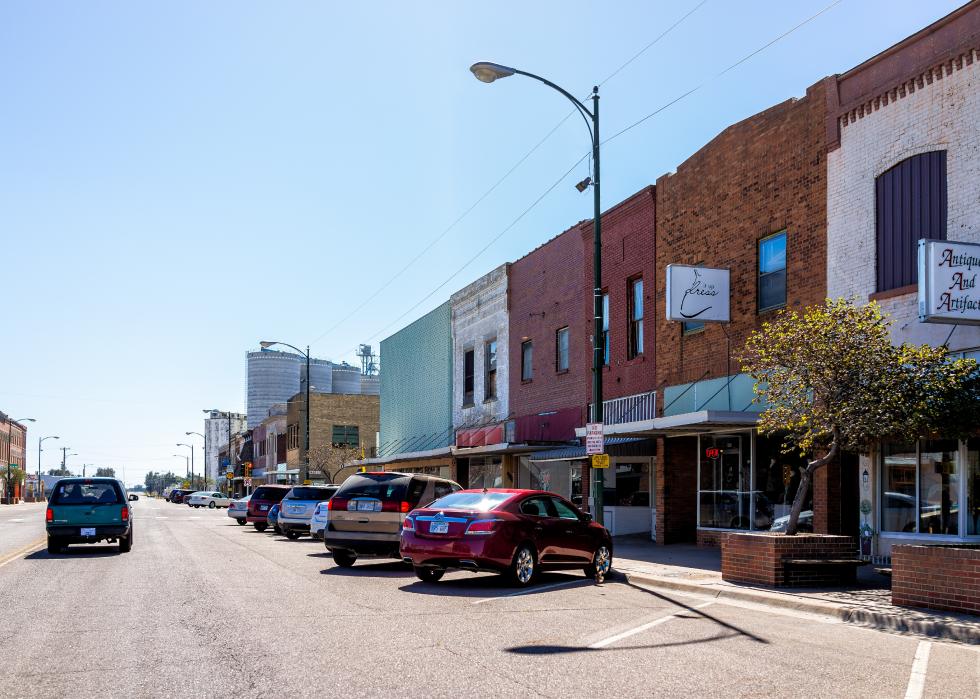
Kansas
- Small businesses in the state: 256,950 (99.1% of all businesses)
- Small business employment: 605,147 (50.5% of all employees)
- New employer businesses per 100 people: 0.11 (5,784 net new jobs)
- Average startup early job creation: 4.02 (#37 highest of all states)
- Self-employed minorities: 20,356 (#35 highest of all states)
- Startup one-year survival rate: 76.3%
- Rate of new employer business actualization: 13.2%
- Rate of new entrepreneurs: 0.3%
- Opportunity share of new entrepreneurs: 88.1%
- Small business exporters: 2,770
In pre-pandemic times, small business survival was tough in Kansas. At the end of 2018, for example, 1,863 businesses started up, but 2,009 shut down. Since the pandemic began, almost 3,600 businesses in Kansas, as of early October, closed or filed for bankruptcy, according to state statistics. The state has allocated $36 million in federal aid to help businesses.

Kentucky
- Small businesses in the state: 355,998 (99.3% of all businesses)
- Small business employment: 712,477 (43.8% of all employees)
- New employer businesses per 100 people: 0.08 (23,339 net new jobs)
- Average startup early job creation: 4.06 (#36 highest of all states)
- Self-employed minorities: 21,137 (#34 highest of all states)
- Startup one-year survival rate: 79.8%
- Rate of new employer business actualization: 10.9%
- Rate of new entrepreneurs: 0.3%
- Opportunity share of new entrepreneurs: 84.8%
- Small business exporters: 3,736
Kentucky's Cabinet for Economic Development recently received a grant from the U.S. Small Business Administration to promote export growth among small businesses, especially as the pandemic has led to more web-based transactions that can have a global reach. In Louisville, more than 630 small businesses affected by the economic fallout of the coronavirus have gotten more than $20 million in grants since July. The city also set up a low-interest loan program for small businesses.

Louisiana
- Small businesses in the state: 457,636 (99.5% of all businesses)
- Small business employment: 905,147 (53.6% of all employees)
- New employer businesses per 100 people: 0.10 (8,760 net new jobs)
- Average startup early job creation: 5.13 (#19 highest of all states)
- Self-employed minorities: 64,735 (#16 highest of all states)
- Startup one-year survival rate: 80.5%
- Rate of new employer business actualization: 8.3%
- Rate of new entrepreneurs: 0.4%
- Opportunity share of new entrepreneurs: 72.7%
- Small business exporters: 3,213
Louisiana had $275 million allotted in federal funds to aid small businesses in its Main Street Recovery Grant Program, which offered grants of up to $15,000 for expenses related to the pandemic. State lawmakers also worked to set aside at least $25 million of those grants for bars, which have been hard hit by COVID-related lockdown measures.

Maine
- Small businesses in the state: 149,355 (99.2% of all businesses)
- Small business employment: 293,872 (57.2% of all employees)
- New employer businesses per 100 people: 0.14 (5,924 net new jobs)
- Average startup early job creation: 4.32 (#32 highest of all states)
- Self-employed minorities: 3,777 (#46 highest of all states)
- Startup one-year survival rate: 78.9%
- Rate of new employer business actualization: 17.1%
- Rate of new entrepreneurs: 0.4%
- Opportunity share of new entrepreneurs: 88.4%
- Small business exporters: 1,610
Maine has distributed more than $100 million in grants to over 2,000 small businesses and nonprofits financially hit by the pandemic. The program is aimed at businesses with fewer than 50 employees. More than a third of the grants have gone to businesses in the battered hospitality industry. Awards topped out at $100,000, and the average grant is $45,000, according to state officials.

Maryland
- Small businesses in the state: 604,176 (99.5% of all businesses)
- Small business employment: 1.2 million (49.5% of all employees)
- New employer businesses per 100 people: 0.10 (17,857 net new jobs)
- Average startup early job creation: 4.49 (#29 highest of all states)
- Self-employed minorities: 116,369 (#10 highest of all states)
- Startup one-year survival rate: 78.2%
- Rate of new employer business actualization: 7.9%
- Rate of new entrepreneurs: 0.3%
- Opportunity share of new entrepreneurs: 85.6%
- Small business exporters: 5,727
Looking at the needs of small businesses, lawmakers in Maryland launched a Small Business Caucus that has focused on ways to provide relief from pandemic-related troubles. It has proposed dipping into state coffers to spend $500 million in grants to small businesses and deferring or waiving penalties and late fees on sales tax and other payments small businesses face. It also has proposed expanding the state's work-share program, which offers an alternative to layoffs by allowing employers to cut costs by equally dividing available work hours among employees and allowing them to get partial unemployment insurance benefits based on their reduced hours.

Massachusetts
- Small businesses in the state: 700,646 (99.5% of all businesses)
- Small business employment: 1.5 million (45.5% of all employees)
- New employer businesses per 100 people: 0.12 (35,232 net new jobs)
- Average startup early job creation: 5.65 (#11 highest of all states)
- Self-employed minorities: 62,049 (#17 highest of all states)
- Startup one-year survival rate: 84.1%
- Rate of new employer business actualization: 13.5%
- Rate of new entrepreneurs: 0.3%
- Opportunity share of new entrepreneurs: 78.6%
- Small business exporters: 9,256
The governor of Massachusetts recently laid out a plan to devote more than $100 million to small business recovery programs, including $35 million in grants targeted at minority-, women-, and veteran-owned businesses, another $35 million for local financial institutions, and $15 million for capital improvements among small businesses. Some of the funding would come from raising fees significantly on Uber, Lyft, and similar transportation companies.

Michigan
- Small businesses in the state: 886,557 (99.6% of all businesses)
- Small business employment: 1.9 million (49.0% of all employees)
- New employer businesses per 100 people: 0.09 (26,199 net new jobs)
- Average startup early job creation: 4.22 (#35 highest of all states)
- Self-employed minorities: 69,149 (#15 highest of all states)
- Startup one-year survival rate: 80.2%
- Rate of new employer business actualization: 9.1%
- Rate of new entrepreneurs: 0.3%
- Opportunity share of new entrepreneurs: 82.6%
- Small business exporters: 13,369
Among the resources for small businesses in Michigan, a COVID-19 Safety Grant Program offers matching funds of up to $10,000 to offset costs of purchasing safety- and health-related equipment and also training. Loans are available for small businesses throughout the state, which also is offering up to $15,000 in financial assistance to small businesses to promote export activity. The program is designed to encourage participation in such areas as foreign trade missions, international web development, and global marketing.

Minnesota
- Small businesses in the state: 526,350 (99.5% of all businesses)
- Small business employment: 1.3 million (46.9% of all employees)
- New employer businesses per 100 people: 0.10 (22,012 net new jobs)
- Average startup early job creation: 3.80 (#41 highest of all states)
- Self-employed minorities: 30,846 (#30 highest of all states)
- Startup one-year survival rate: 80.4%
- Rate of new employer business actualization: 12.3%
- Rate of new entrepreneurs: 0.2%
- Opportunity share of new entrepreneurs: 81.6%
- Small business exporters: 7,363
Small businesses were surveyed by a Minnesota economic development agency in September about the impact of the pandemic, and 13% said they had resumed normal operations. Another 4% said they would return to normal within three months, 10% said it would take four to six months, and 45% said they would not be back to normal for six months or more. One in 10 said they would not be returning to their former workplace operations. Lawmakers in mid-October approved a sweeping public works building package that includes a provision allowing businesses to deduct the cost of large equipment purchases. Supporters of small businesses hailed the move as paving the way for companies to invest in and expand operations.
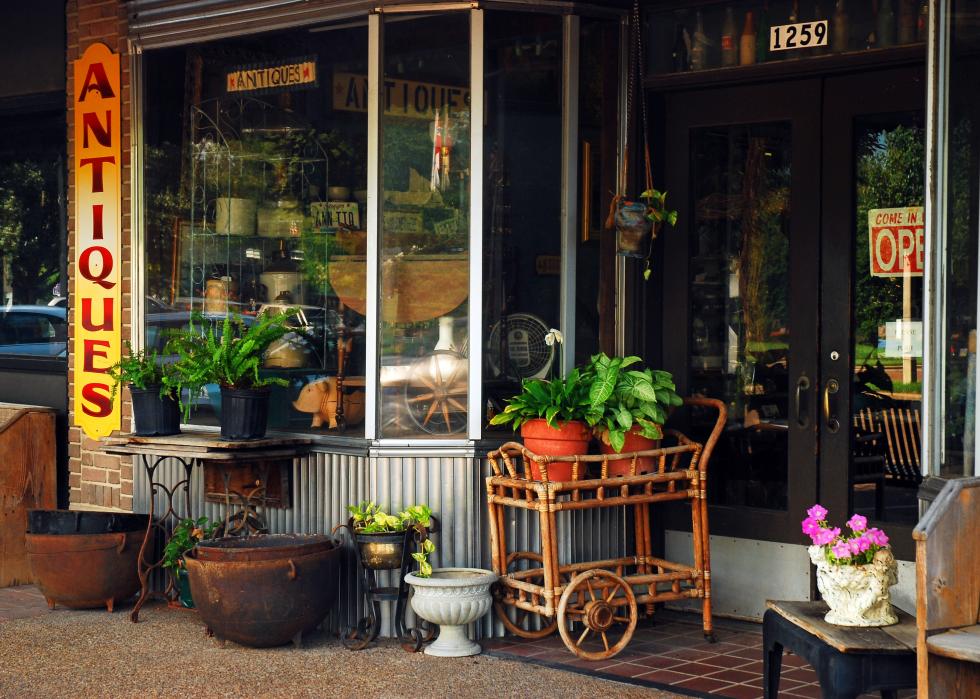
Mississippi
- Small businesses in the state: 262,272 (99.3% of all businesses)
- Small business employment: 437,242 (46.5% of all employees)
- New employer businesses per 100 people: 0.08 (9,212 net new jobs)
- Average startup early job creation: 3.83 (#40 highest of all states)
- Self-employed minorities: 34,152 (#29 highest of all states)
- Startup one-year survival rate: 80.5%
- Rate of new employer business actualization: 8.2%
- Rate of new entrepreneurs: 0.3%
- Opportunity share of new entrepreneurs: 86.4%
- Small business exporters: 1,545
Mississippi in May set up a Back To Business Mississippi Grant Program to help businesses with 50 or fewer workers cope with the economic impact of COVID-19. Grants ranged from $1,500 to $25,000. Lawmakers set aside $240 million for Back to Business, which at of the start of October had paid out $63 million to small businesses. Officials said out of more than 33,000 applications, more than 13,000 had been approved, almost 10,000 were rejected, and the rest were under review.

Missouri
- Small businesses in the state: 530,380 (99.4% of all businesses)
- Small business employment: 1.2 million (46.2% of all employees)
- New employer businesses per 100 people: 0.12 (13,855 net new jobs)
- Average startup early job creation: 5.35 (#16 highest of all states)
- Self-employed minorities: 37,621 (#28 highest of all states)
- Startup one-year survival rate: 75.3%
- Rate of new employer business actualization: 12.7%
- Rate of new entrepreneurs: 0.4%
- Opportunity share of new entrepreneurs: 80.8%
- Small business exporters: 5,283
More than a third of small businesses in Missouri said they do not see a full economic recovery until at least March, nearly a year from when the nation's COVID-19 outbreak began. A survey in September found more than a quarter were still seeing a drop in revenues. The U.S. Department of Agriculture's Rural Development grant program in early October announced more than $1 million was being awarded to rural small businesses in Missouri, including community-supported farming, an arts center, a farmer's market, and Missouri River port facilities.
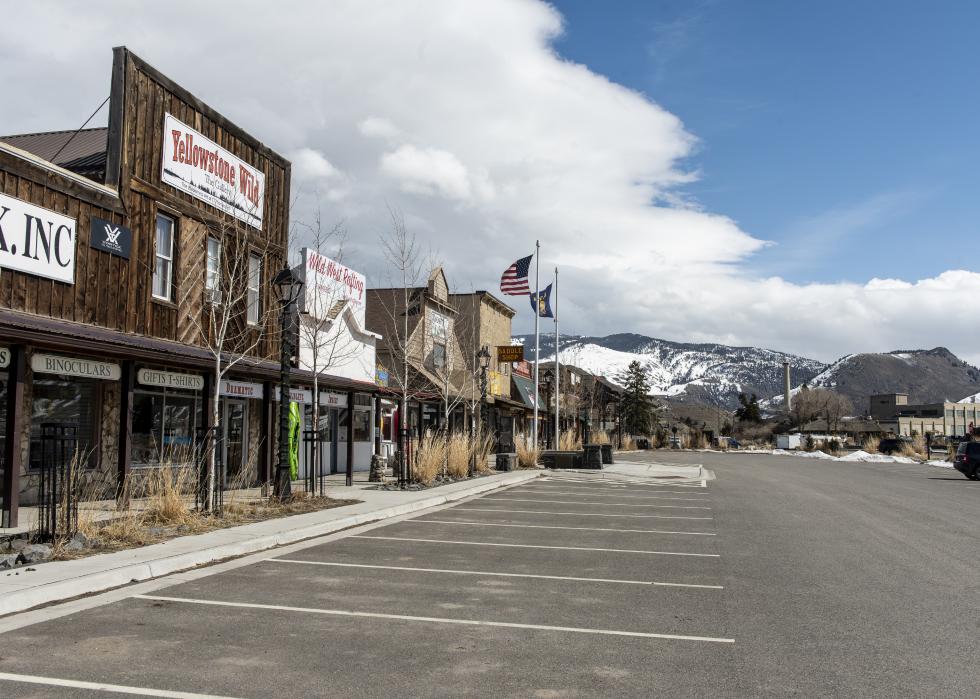
Montana
- Small businesses in the state: 123,419 (99.3% of all businesses)
- Small business employment: 245,758 (65.3% of all employees)
- New employer businesses per 100 people: 0.19 (3,772 net new jobs)
- Average startup early job creation: 5.39 (#15 highest of all states)
- Self-employed minorities: 6,411 (#43 highest of all states)
- Startup one-year survival rate: 79.7%
- Rate of new employer business actualization: 13.0%
- Rate of new entrepreneurs: 0.3%
- Opportunity share of new entrepreneurs: 85.6%
- Small business exporters: 1,210
This September, the number of small businesses open in Montana was off almost 25% from January, thanks to the impact of the coronavirus pandemic. The state established an array of programs and policies to assist small businesses, including a Workforce Recovery program for those that laid off employees or cut their hours. The program will reimburse businesses for the wages of full-time, permanent jobs that they create and keep for at least six months, at up to 25 jobs per business.

Nebraska
- Small businesses in the state: 179,509 (99.1% of all businesses)
- Small business employment: 412,587 (49.5% of all employees)
- New employer businesses per 100 people: 0.12 (5,321 net new jobs)
- Average startup early job creation: 5.07 (#20 highest of all states)
- Self-employed minorities: 10,611 (#39 highest of all states)
- Startup one-year survival rate: 78.9%
- Rate of new employer business actualization: 14.6%
- Rate of new entrepreneurs: 0.3%
- Opportunity share of new entrepreneurs: 90.1%
- Small business exporters: 1,488
In late September, Nebraska received about $263,000 in funds from the U.S. Small Business Administration to promote small business export opportunities through the State Trade Expansion Program, the eighth year that the state has gotten such a grant. According to recent research, Nebraska's small businesses lag the rest of the country in adopting and utilizing online digital tools, which proponents say will be helpful in recovering from the economic fallout of the pandemic. Just 29% of Nebraska's small businesses considered digital tools essential and were using them before the coronavirus, compared with 35% nationwide. Only 15% saw value in digital tools and were using them somewhat, less than half the rate among small businesses across the county. But more than nine out of 10 small businesses in the state said they upped their use of digital tools as the pandemic hit.
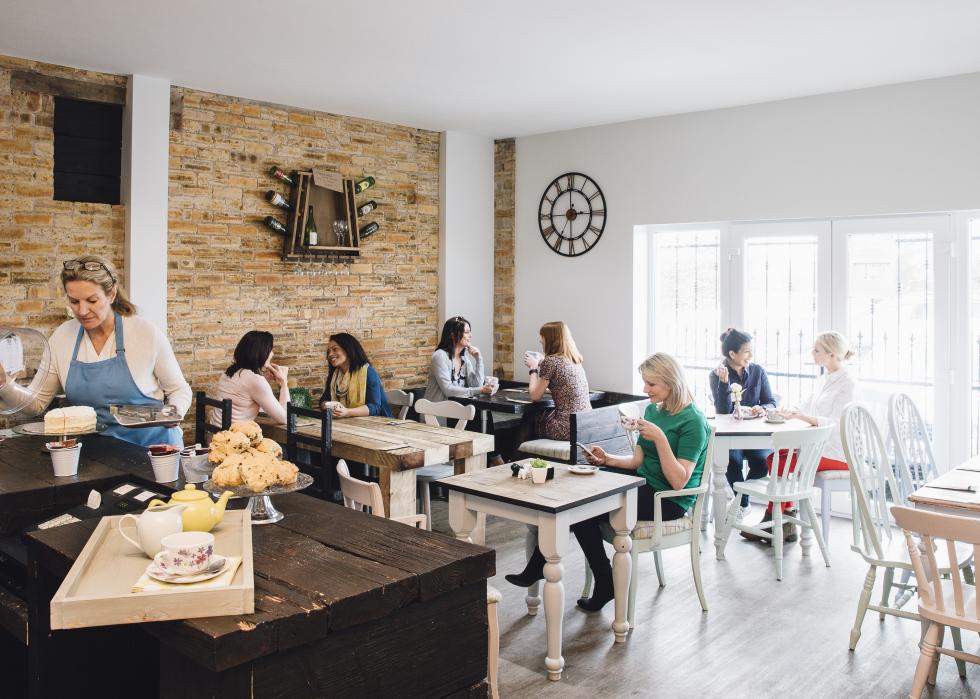
Nevada
- Small businesses in the state: 283,333 (99.2% of all businesses)
- Small business employment: 503,144 (42.2% of all employees)
- New employer businesses per 100 people: 0.14 (30,054 net new jobs)
- Average startup early job creation: 6.36 (#6 highest of all states)
- Self-employed minorities: 52,451 (#21 highest of all states)
- Startup one-year survival rate: 77.5%
- Rate of new employer business actualization: 9.6%
- Rate of new entrepreneurs: 0.3%
- Opportunity share of new entrepreneurs: 82.6%
- Small business exporters: 2,901
In mid-October, the governor of Nevada announced a grant program to provide $20 million in relief for small businesses struggling with the impact of COVID-19. Called the Pandemic Emergency Technical Support, or PETS, the initiative is open to small businesses, nonprofits, and arts and culture groups, which can apply for grants of up to $10,000. The money can be put toward any number of expenses, including payroll, inventory, rent, and protective equipment. Eligible companies must have 50 or fewer employees and annual gross revenues of less than $4 million.
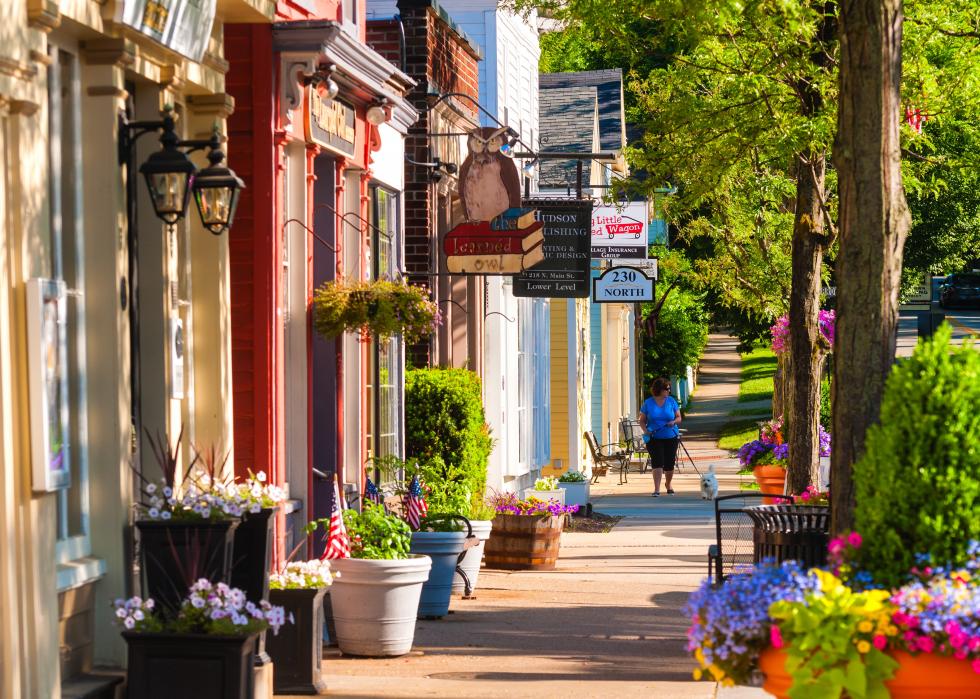
New Hampshire
- Small businesses in the state: 136,535 (99.0% of all businesses)
- Small business employment: 300,628 (49.8% of all employees)
- New employer businesses per 100 people: 0.12 (7,216 net new jobs)
- Average startup early job creation: 3.75 (#44 highest of all states)
- Self-employed minorities: 4,793 (#44 highest of all states)
- Startup one-year survival rate: 77.0%
- Rate of new employer business actualization: 12.3%
- Rate of new entrepreneurs: 0.3%
- Opportunity share of new entrepreneurs: 91.0%
- Small business exporters: 2,239
New Hampshire in mid-October boosted its support for small businesses under the Main Street Fund, a supply of federal money that already gave out $340 million in grants to some 5,000 companies. The state said another $100 million in grant money was being added to the program, which is open to companies with yearly revenues of up to $20 million.

New Jersey
- Small businesses in the state: 908,209 (99.6% of all businesses)
- Small business employment: 1.8 million (49.9% of all employees)
- New employer businesses per 100 people: 0.12 (48,114 net new jobs)
- Average startup early job creation: 5.83 (#10 highest of all states)
- Self-employed minorities: 145,721 (#6 highest of all states)
- Startup one-year survival rate: 79.8%
- Rate of new employer business actualization: 9.9%
- Rate of new entrepreneurs: 0.3%
- Opportunity share of new entrepreneurs: 84.9%
- Small business exporters: 18,953
New Jersey in mid-October rolled out a third round of grants for small businesses, the latest one to be focused on restaurant owners. The grants of up to $20,000 are distributed by the state's Economic Development Authority that is drawing on $70 million in federal aid. Also targeted in the latest round in the Small Business Emergency Assistance program are businesses with five or fewer employees and those in low-income areas. The program has awarded more than $65 million in grants to some 20,000 businesses since April.
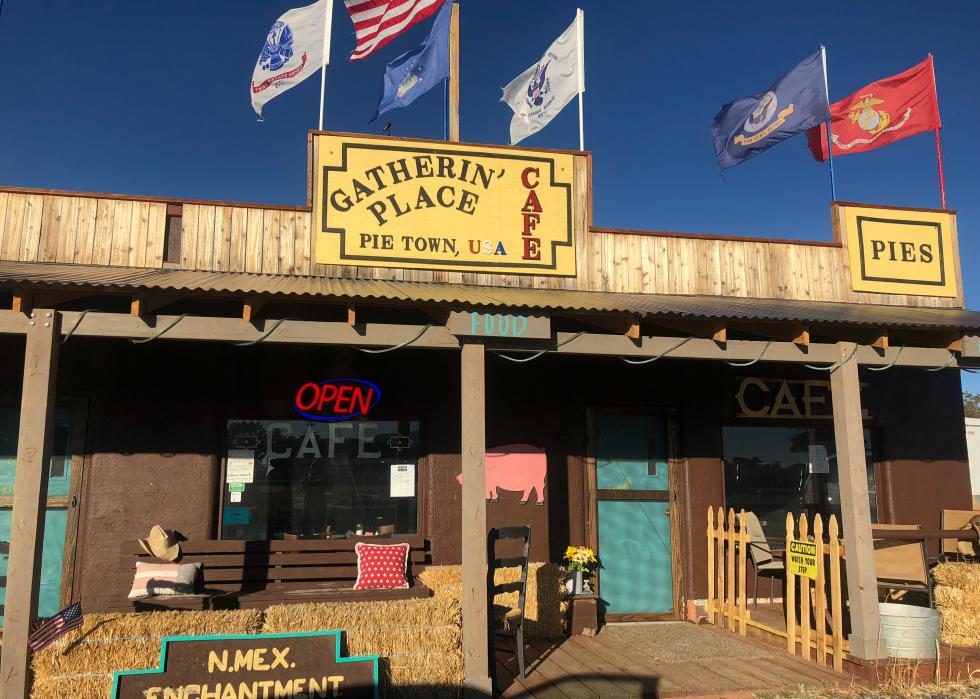
New Mexico
- Small businesses in the state: 156,996 (99.0% of all businesses)
- Small business employment: 339,731 (54.2% of all employees)
- New employer businesses per 100 people: 0.09 (7,058 net new jobs)
- Average startup early job creation: 3.86 (#39 highest of all states)
- Self-employed minorities: 51,090 (#22 highest of all states)
- Startup one-year survival rate: 78.6%
- Rate of new employer business actualization: 11.1%
- Rate of new entrepreneurs: 0.4%
- Opportunity share of new entrepreneurs: 75.4%
- Small business exporters: 1,159
New Mexico set aside $400 million from its tax coffers to set up a Small Business Recovery Loan Fund over the summer to help with the economic impact of the COVID-19 pandemic. Eligible small businesses and nonprofits had to have had gross revenues in 2019 of less than $5 million and suffered an income drop of 30% or more in April and May 2020 compared to the same period in 2019. Those that qualify can borrow up to two times their average monthly expenses, with a maximum of $75,000. The interest is one half of the prime rate, with payments of only the interest due for the first three years.

New York
- Small businesses in the state: 2.2 million (99.8% of all businesses)
- Small business employment: 4.1 million (49.8% of all employees)
- New employer businesses per 100 people: 0.15 (69,042 net new jobs)
- Average startup early job creation: 5.56 (#14 highest of all states)
- Self-employed minorities: 381,950 (#3 highest of all states)
- Startup one-year survival rate: 79.5%
- Rate of new employer business actualization: 12.5%
- Rate of new entrepreneurs: 0.3%
- Opportunity share of new entrepreneurs: 89.3%
- Small business exporters: 34,506
New York has a Forward Loan Fund aimed at small businesses, nonprofits, and landlords of small residential buildings struggling during the pandemic. Eligible businesses must have 20 or fewer employees, and landlords must have suffered a drop in rental income. Landlords in low-income areas or those with low-income tenants get priority. In New York City alone, more than 2,800 businesses had permanently closed their doors as of early August, victims of the financial onslaught of the pandemic. A report by a New York City nonprofit has predicted about a third of the city's 240,000 small businesses are likely to never reopen.

North Carolina
- Small businesses in the state: 934,604 (99.6% of all businesses)
- Small business employment: 1.7 million (45.3% of all employees)
- New employer businesses per 100 people: 0.11 (62,614 net new jobs)
- Average startup early job creation: 4.68 (#27 highest of all states)
- Self-employed minorities: 120,268 (#9 highest of all states)
- Startup one-year survival rate: 79.7%
- Rate of new employer business actualization: 11.3%
- Rate of new entrepreneurs: 0.3%
- Opportunity share of new entrepreneurs: 87.5%
- Small business exporters: 9,607
North Carolina has a Mortgage, Utility, and Rent Relief program, with $40 million allocated for small businesses badly disrupted by the pandemic. Businesses that qualify can get funding to cover up to four months of expenses such as rent, mortgage interest payments, and utility bills. Businesses that are women- and minority-owned also can tap into $12 million in grant money through a program called RETOOLNC. Also, two nonprofits have partnered to offer coaching to small business owners by helping navigate credit reviews, critiquing business plans, and assisting with financial statements. Organizers said the coaching is for the growing numbers of people choosing or being forced to go into business for themselves.

North Dakota
- Small businesses in the state: 74,202 (98.8% of all businesses)
- Small business employment: 195,312 (57.4% of all employees)
- New employer businesses per 100 people: 0.16 (4,857 net new jobs)
- Average startup early job creation: 4.56 (#28 highest of all states)
- Self-employed minorities: 3,652 (#47 highest of all states)
- Startup one-year survival rate: 78.4%
- Rate of new employer business actualization: 15.0%
- Rate of new entrepreneurs: 0.4%
- Opportunity share of new entrepreneurs: 92.7%
- Small business exporters: 1,469
Small businesses in North Dakota have been getting help surviving the economic impact of the COVID-19 pandemic from the state's Economic Resiliency Grant program, which has $69 million in funding. Four out of five businesses getting the grant aid have been small entities with fewer than 25 employees. The grants are as big as $50,000, but a business with more than one location can apply for as much as $100,000. In addition, North Dakota's Lewis & Clark Regional Development Council, a collaboration of affordable housing and community development nonprofits, has revolving loans for hard-hit small businesses.

Ohio
- Small businesses in the state: 965,576 (99.6% of all businesses)
- Small business employment: 2.2 million (45.3% of all employees)
- New employer businesses per 100 people: 0.07 (44,523 net new jobs)
- Average startup early job creation: 3.70 (#45 highest of all states)
- Self-employed minorities: 69,645 (#14 highest of all states)
- Startup one-year survival rate: 79.7%
- Rate of new employer business actualization: 9.6%
- Rate of new entrepreneurs: 0.2%
- Opportunity share of new entrepreneurs: 75.9%
- Small business exporters: 14,600
Among Ohio's small businesses, recent research found three out of five restaurants fear they will be forced to close by mid-2021 if they have to keep running at limited capacity to help prevent the spread of COVID-19. Fewer than one in five said they could stay open indefinitely. The state has approved new measures making to-go cocktails legal, blocking local governments from taxing plastic bags for at least a year, and allowing bars and restaurants to use more outside space, all aimed at helping small businesses build back from COVID-19 related economic impacts.

Oklahoma
- Small businesses in the state: 358,647 (99.4% of all businesses)
- Small business employment: 710,271 (52.2% of all employees)
- New employer businesses per 100 people: 0.12 (16,047 net new jobs)
- Average startup early job creation: 5.65 (#11 highest of all states)
- Self-employed minorities: 50,271 (#23 highest of all states)
- Startup one-year survival rate: 80.0%
- Rate of new employer business actualization: 11.7%
- Rate of new entrepreneurs: 0.4%
- Opportunity share of new entrepreneurs: 82.6%
- Small business exporters: 2,640
Small businesses in industries such as personal care, tourism, and hospitality are eligible for Oklahoma's $48.5 million business interruption grant program. The grants, which top out at $250,000, are designed for small businesses with up to 250 employees, and 15% are intended for businesses owned by women and minorities.
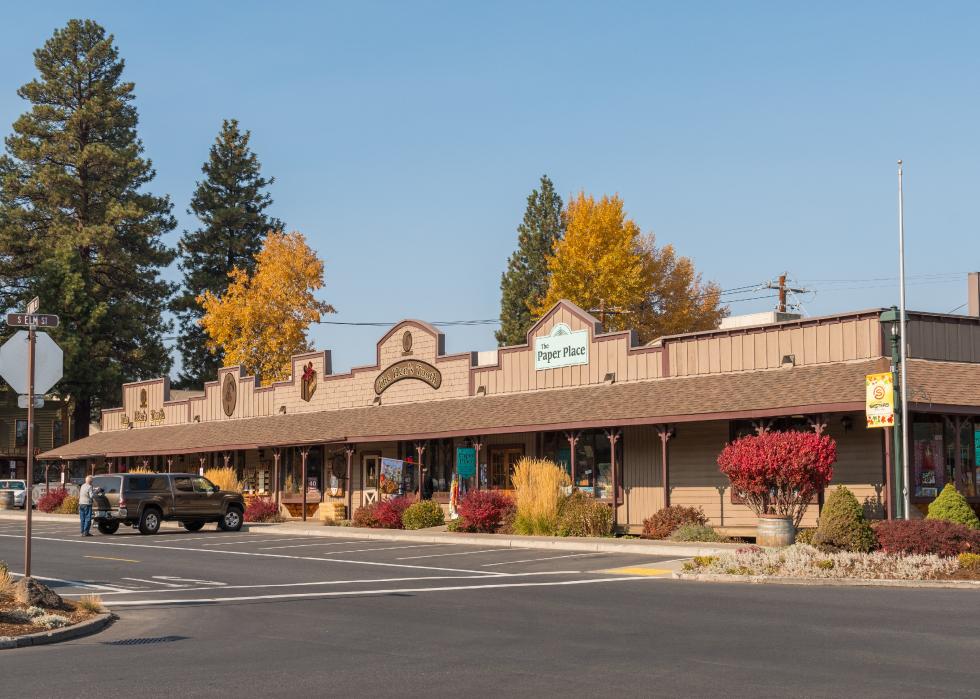
Oregon
- Small businesses in the state: 387,819 (99.4% of all businesses)
- Small business employment: 871,241 (54.6% of all employees)
- New employer businesses per 100 people: 0.15 (17,795 net new jobs)
- Average startup early job creation: 4.78 (#23 highest of all states)
- Self-employed minorities: 42,869 (#26 highest of all states)
- Startup one-year survival rate: 77.2%
- Rate of new employer business actualization: 15.7%
- Rate of new entrepreneurs: 0.3%
- Opportunity share of new entrepreneurs: 90.0%
- Small business exporters: 5,231
The state of Oregon has an array of financial assistance options for small businesses, with some designed especially to help deal with the coronavirus impact. It has Entrepreneurial Development Loans for startups and micro-enterprises, a Business Development Fund with loans to be used as working capital, a Capital Access reserve for financial institutions to make high-risk business loans, and a Credit Enhancement Fund that provides loan guarantees for small businesses seeking capital. It also has loan modification and forgiveness programs and Community Development Block Grants for small businesses impacted financially by the coronavirus.
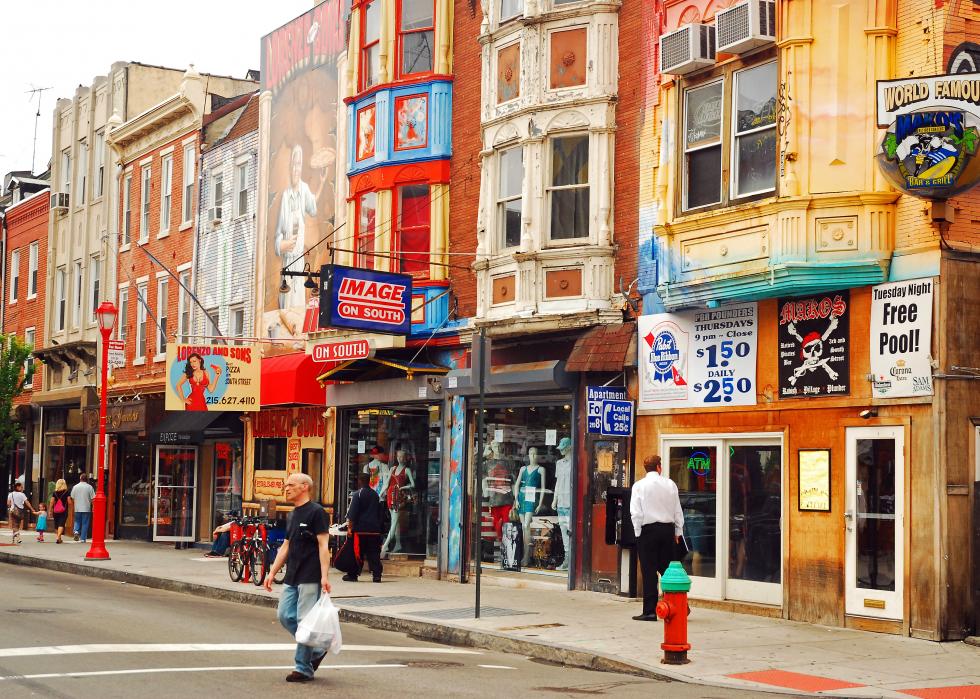
Pennsylvania
- Small businesses in the state: 1.1 million (99.6% of all businesses)
- Small business employment: 2.5 million (46.2% of all employees)
- New employer businesses per 100 people: 0.09 (57,377 net new jobs)
- Average startup early job creation: 3.68 (#46 highest of all states)
- Self-employed minorities: 89,074 (#12 highest of all states)
- Startup one-year survival rate: 79.9%
- Rate of new employer business actualization: 11.6%
- Rate of new entrepreneurs: 0.2%
- Opportunity share of new entrepreneurs: 87.3%
- Small business exporters: 13,971
A significant resource for small businesses in Pennsylvania coping with the pandemic is a $225 million allocation in relief grants ranging from $5,000 to $50,000. The grants are designed to cover the costs of reopening and debt payment relief. Most of the funds are being distributed through a Main Street Business Revitalization Program and a Historically Disadvantaged Business Revitalization Program, and special consideration is going to certain businesses such as those owned by women and those in rural communities. Eligible businesses had to have had annual revenues of $1 million or less before the pandemic and 25 or fewer employees.

Rhode Island
- Small businesses in the state: 103,986 (98.9% of all businesses)
- Small business employment: 229,212 (52.6% of all employees)
- New employer businesses per 100 people: 0.14 (3,186 net new jobs)
- Average startup early job creation: 4.00 (#38 highest of all states)
- Self-employed minorities: 7,154 (#42 highest of all states)
- Startup one-year survival rate: 79.9%
- Rate of new employer business actualization: 14.5%
- Rate of new entrepreneurs: 0.2%
- Opportunity share of new entrepreneurs: 84.0%
- Small business exporters: 1,635
Rhode Island has had a reputation for being inhospitable to business, with an aging infrastructure, costly tax structure, and weighty regulations. Aimed at getting small businesses back on their feet from the pandemic, Rhode Island's "Restore RI" grant program has $50 million in funding to help with reopening expenses such as personal protective equipment, physical alterations, cleaning supplies, and upgraded technology such as touchless payment systems. Grants are capped at $15,000. Other money has been allotted to aid small businesses with financial planning and accounting advice as they adapt to economic changes.
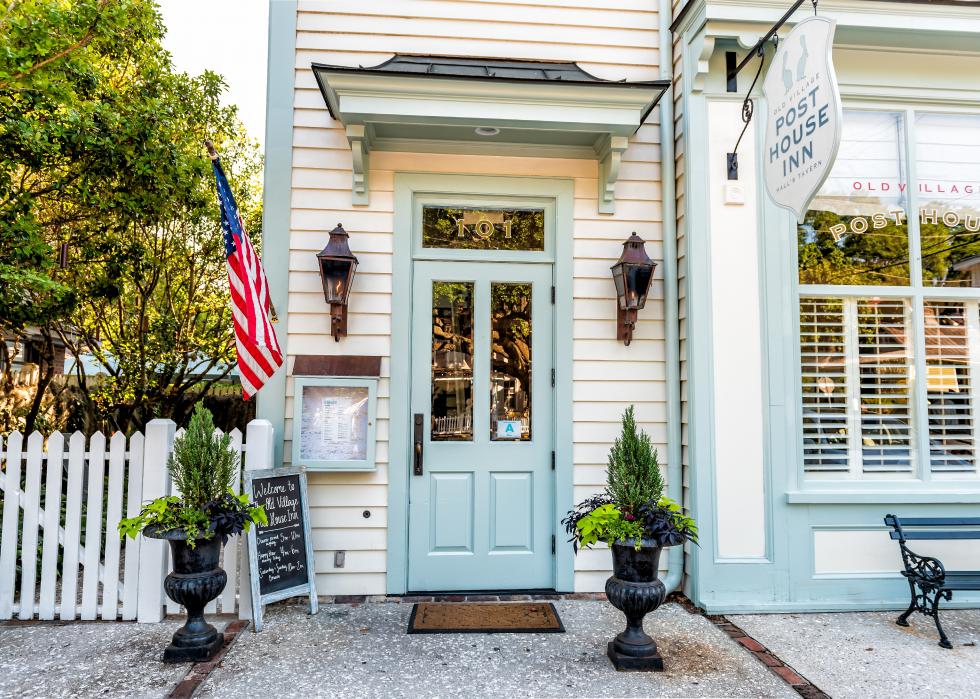
South Carolina
- Small businesses in the state: 431,835 (99.4% of all businesses)
- Small business employment: 817,008 (43.8% of all employees)
- New employer businesses per 100 people: 0.11 (44,307 net new jobs)
- Average startup early job creation: 6.43 (#4 highest of all states)
- Self-employed minorities: 57,623 (#19 highest of all states)
- Startup one-year survival rate: 78.5%
- Rate of new employer business actualization: 11.1%
- Rate of new entrepreneurs: 0.3%
- Opportunity share of new entrepreneurs: 84.9%
- Small business exporters: 5,661
South Carolina has offered low-interest federally funded loans of up to $2 million to small businesses struggling with economic injury from the coronavirus pandemic. They are applicable to pay debts, payroll, and other bills. It also set up a Minority and Small Business Relief Grant Program of $65 million, offering reimbursement for expenses linked to the pandemic. Grant amounts range from $2,500 to $25,000. Priority went to minority-owned businesses and businesses with fewer than 15 employees that have not gotten federal relief. As of June, roughly a third of the state's Black-owned businesses were estimated to have closed for good.
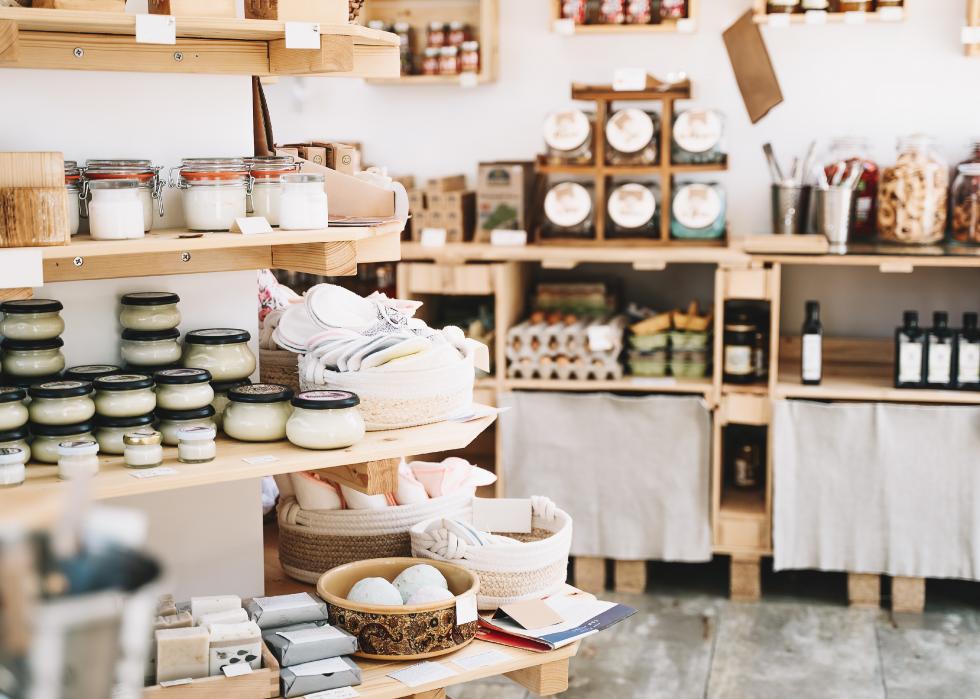
South Dakota
- Small businesses in the state: 88,191 (99.0% of all businesses)
- Small business employment: 209,403 (58.2% of all employees)
- New employer businesses per 100 people: 0.15 (2,082 net new jobs)
- Average startup early job creation: 3.21 (#51 highest of all states)
- Self-employed minorities: 3,096 (#49 highest of all states)
- Startup one-year survival rate: 80.2%
- Rate of new employer business actualization: 14.7%
- Rate of new entrepreneurs: 0.3%
- Opportunity share of new entrepreneurs: 96.2%
- Small business exporters: 703
South Dakota instituted a $400 million Small Business COVID Interruption program to aid eligible companies and a Small Business Startup program with up to $10 million in grants to new businesses whose growth suffered due to the pandemic. Eligible businesses had to have seen a drop in year-over-year cash flow from operations of 25% or more. Startups need to show a net loss or drop in monthly income in the months after the coronavirus outbreak.

Tennessee
- Small businesses in the state: 620,125 (99.5% of all businesses)
- Small business employment: 1.1 million (42.1% of all employees)
- New employer businesses per 100 people: 0.09 (40,374 net new jobs)
- Average startup early job creation: 4.80 (#22 highest of all states)
- Self-employed minorities: 58,191 (#18 highest of all states)
- Startup one-year survival rate: 79.4%
- Rate of new employer business actualization: 11.3%
- Rate of new entrepreneurs: 0.3%
- Opportunity share of new entrepreneurs: 91.5%
- Small business exporters: 6,088
Tennessee has offered relief grants of up to $30,000, which do not need to be repaid, to small businesses, tourist attractions, and farming-related businesses that lost income due to the coronavirus. Research has shown that one in five businesses in the state were in industries at the highest risk to the pandemic's economic impact—restaurants and bars, travel and transportation, entertainment, and personal services. Such businesses employed a quarter of the state's private sector workers. Tennessee also allocated $50 million in federal funds under its Supplemental Employer Recovery Grant program, specifically targeting businesses owned by minorities, women, and veterans.

Texas
- Small businesses in the state: 2.8 million (99.8% of all businesses)
- Small business employment: 4.8 million (45.1% of all employees)
- New employer businesses per 100 people: 0.12 (227,487 net new jobs)
- Average startup early job creation: 5.61 (#13 highest of all states)
- Self-employed minorities: 710,215 (#1 highest of all states)
- Startup one-year survival rate: 79.8%
- Rate of new employer business actualization: 12.0%
- Rate of new entrepreneurs: 0.4%
- Opportunity share of new entrepreneurs: 83.6%
Texas ranks first among the U.S. states with the number of self-employed minority residents, according to Small Business Administration figures. Small businesses can benefit from Texas having neither a corporate nor a personal income tax as well as low fees and relatively little regulation. Among small businesses in Texas hard hit by the coronavirus's economic impacts have been the so-called 51-percenters—businesses such as bars, music venues, craft breweries, and winery tasting rooms that make more than 51% of their revenue from the sale of alcohol. Nearly a quarter of the state's almost 8,000 bars have added food service to be reclassified as restaurants, which are allowed to operate at limited capacity.

Utah
- Small businesses in the state: 301,265 (99.3% of all businesses)
- Small business employment: 590,417 (46.0% of all employees)
- New employer businesses per 100 people: 0.17 (35,531 net new jobs)
- Average startup early job creation: 5.90 (#8 highest of all states)
- Self-employed minorities: 21,497 (#33 highest of all states)
- Startup one-year survival rate: 77.9%
- Rate of new employer business actualization: 10.7%
- Rate of new entrepreneurs: 0.3%
- Opportunity share of new entrepreneurs: 91.5%
- Small business exporters: 3,181
Utah established a $2 million Small Business Quarantined Employee Grant program under which businesses with fewer than 50 employees can pay those who must quarantine or self-isolate due to COVID-19 exposure or positive test results for the virus. The program reimburses small businesses paying employees in quarantine or isolation up to 40 hours a week for up to two weeks.
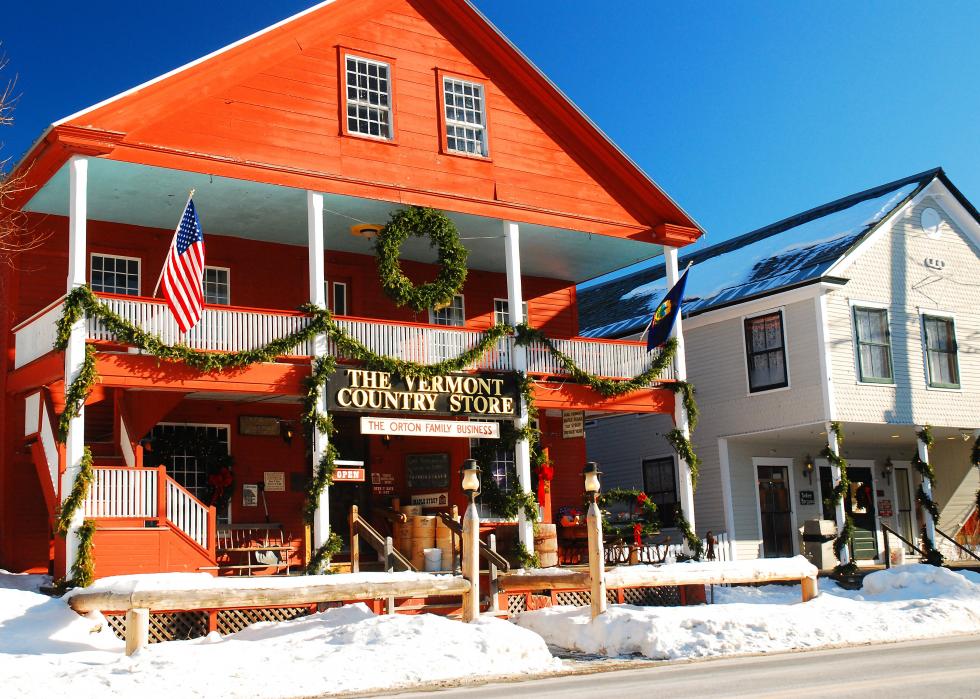
Vermont
- Small businesses in the state: 78,759 (99.0% of all businesses)
- Small business employment: 157,322 (60.8% of all employees)
- New employer businesses per 100 people: 0.14 (1,635 net new jobs)
- Average startup early job creation: 4.24 (#34 highest of all states)
- Self-employed minorities: 2,331 (#50 highest of all states)
- Startup one-year survival rate: 78.2%
- Rate of new employer business actualization: 13.6%
- Rate of new entrepreneurs: 0.3%
- Opportunity share of new entrepreneurs: 82.3%
- Small business exporters: 967
Vermont has spent about $240 million this year on business financial assistance, and it recently allocated funds to cash infusions, stimulus payments to boost local spending, and a program called Restart Vermont Technical Assistance offering access to services such as financial management, marketing, and digital strategies. Among the state's assistance programs are micro-grants of up to $500 for sales and marketing projects that benefit farming businesses such as Community Supported Agriculture programs, e-commerce trade, and farm stands.
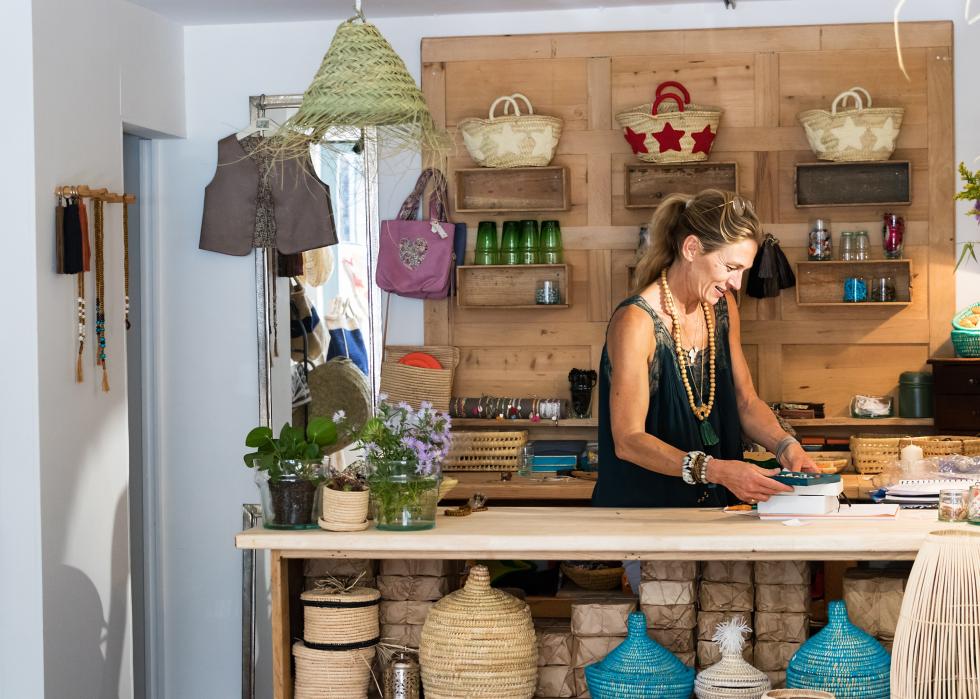
Virginia
- Small businesses in the state: 766,826 (99.5% of all businesses)
- Small business employment: 1.6 million (47.1% of all employees)
- New employer businesses per 100 people: 0.10 (39,397 net new jobs)
- Average startup early job creation: 5.16 (#17 highest of all states)
- Self-employed minorities: 123,774 (#7 highest of all states)
- Startup one-year survival rate: 90.5%
- Rate of new employer business actualization: 10.1%
- Rate of new entrepreneurs: 0.2%
- Opportunity share of new entrepreneurs: 83.5%
- Small business exporters: 6,143
Virginia has been considered business friendly with anti-union "right-to-work" laws, minimal union presence, and limited regulatory environment. It recently expanded opportunities for small businesses to apply for forgivable grants, allowing companies that applied as well for federal funding under the U.S. government's CARES Act. The latest Rebuild VA program, for companies with 25 or fewer workers, offers grants of up to $10,000 to cover recurring monthly expenses like salaries as well as costs such as personal protective equipment.
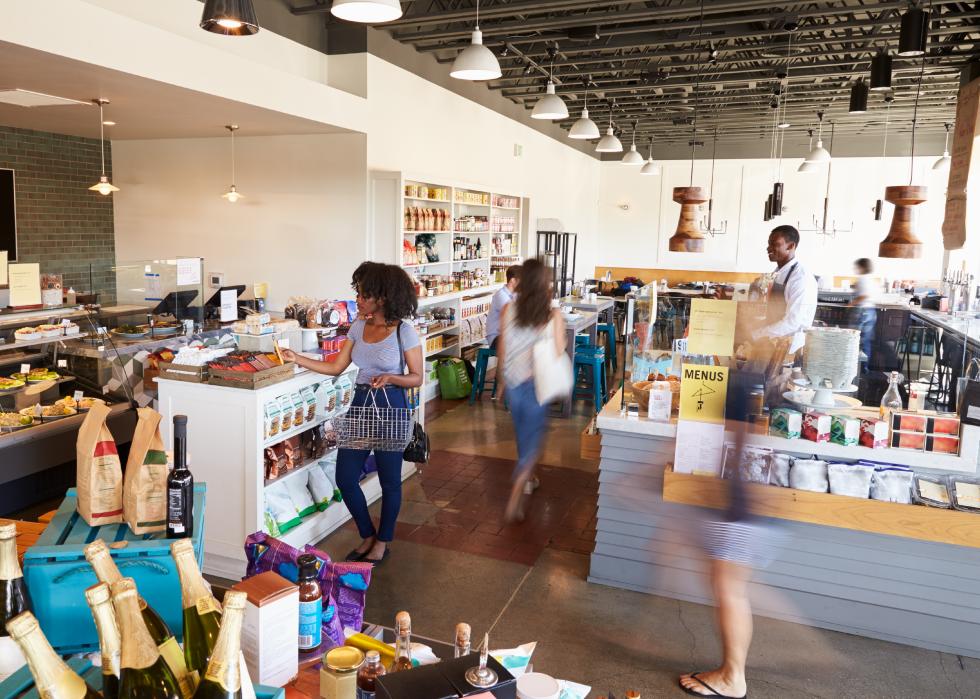
Washington
- Small businesses in the state: 630,819 (99.5% of all businesses)
- Small business employment: 1.4 million (50.7% of all employees)
- New employer businesses per 100 people: 0.16 (36,957 net new jobs)
- Average startup early job creation: 4.78 (#23 highest of all states)
- Self-employed minorities: 91,902 (#11 highest of all states)
- Startup one-year survival rate: 79.7%
- Rate of new employer business actualization: 17.4%
- Rate of new entrepreneurs: 0.3%
- Opportunity share of new entrepreneurs: 87.9%
- Small business exporters: 11,315
Small businesses in Washington have faced high failure rates, which some blame on the state's tax policies. From 2013 to 2016, more small businesses closed than started up. Since the outbreak of the pandemic, the state has spent $20 million in support grants to help businesses reopen, $10 million in grants to very small businesses with 10 or fewer employees, and $15 million on other small business initiatives. In about a fifth of the state's 39 counties, pre-pandemic, small businesses employed more than 80% of local workers.

West Virginia
- Small businesses in the state: 113,779 (98.9% of all businesses)
- Small business employment: 269,789 (49.1% of all employees)
- New employer businesses per 100 people: 0.07 (4,270 net new jobs)
- Average startup early job creation: 3.23 (#50 highest of all states)
- Self-employed minorities: 3,938 (#45 highest of all states)
- Startup one-year survival rate: 79.9%
- Rate of new employer business actualization: 11.2%
- Rate of new entrepreneurs: 0.2%
- Opportunity share of new entrepreneurs: 85.3%
- Small business exporters: 815
West Virginia has promoted its efforts at making small businesses welcome with a low cost of living, reduced taxes, regulatory reform, and right-to-work laws that limit union activity. For economic relief related to the coronavirus, the state has awarded small businesses up to $5,000 in grants, while sole proprietors and the self-employed were eligible for grants of up to $2,000.

Wisconsin
- Small businesses in the state: 456,884 (99.4% of all businesses)
- Small business employment: 1.3 million (49.5% of all employees)
- New employer businesses per 100 people: 0.09 (15,315 net new jobs)
- Average startup early job creation: 3.80 (#41 highest of all states)
- Self-employed minorities: 26,623 (#31 highest of all states)
- Startup one-year survival rate: 78.6%
- Rate of new employer business actualization: 11.3%
- Rate of new entrepreneurs: 0.2%
- Opportunity share of new entrepreneurs: 84.4%
- Small business exporters: 7,607
In Wisconsin, the We're All In Small Business Grant program aims to help small businesses rebuild from the impacts of the COVID-19 pandemic, with grants to cover business interruption costs or expenses such as safety improvements, wages, rent, and inventory. Eligible businesses must show a loss due to the pandemic, have less than $1 million in annual revenues, and have 50 or fewer employees. The $5,000 grants are open to seasonal businesses and to gig workers and other independent contractors. More than $50 million has been allocated in the program's latest phase for eligible applicants that are estimated to number more than 10,000.
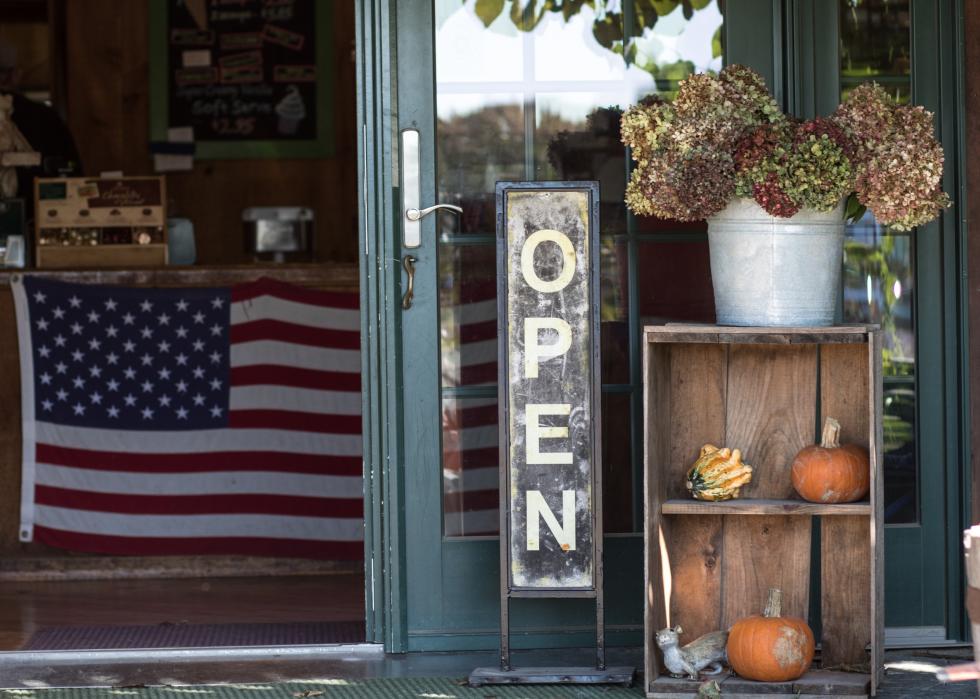
Wyoming
- Small businesses in the state: 68,641 (98.9% of all businesses)
- Small business employment: 128,883 (63.8% of all employees)
- New employer businesses per 100 people: 0.31 (5,762 net new jobs)
- Average startup early job creation: 5.16 (#17 highest of all states)
- Self-employed minorities: 3,364 (#48 highest of all states)
- Startup one-year survival rate: 79.9%
- Rate of new employer business actualization: 9.4%
- Rate of new entrepreneurs: 0.4%
- Opportunity share of new entrepreneurs: 91.8%
- Small business exporters: 359
Wyoming does not have a corporate income tax or a personal income tax, which can be seen as beneficial to small businesses. As of early October, the state had spent about $300 million in business grants among 7,600 companies, with grants averaging about $40,000. Among the state's programs are grants to reimburse businesses for COVID-related expenses such as cleaning supplies and personal protective equipment.



